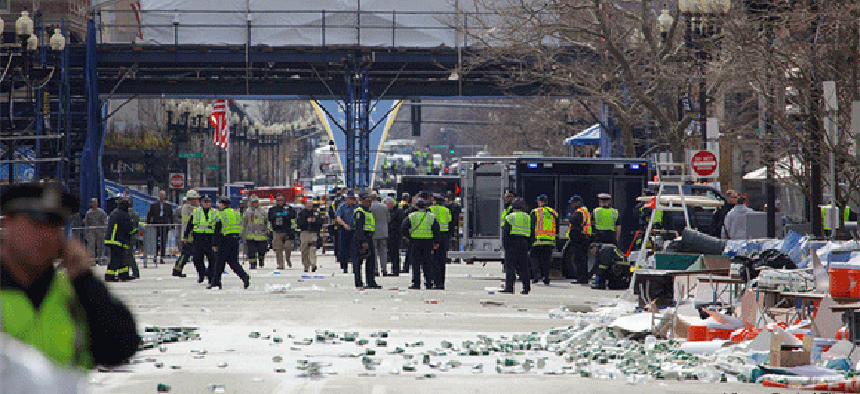In police work, technology complements shoe leather

The video evidence that led to the capture of the alleged Boston Marathon Bomber owed as much to old-fashioned police work as it did to modern technology, says former Boston police commissioner.
City, state and federal police analysts scanned thousands of hours of video in the search for evidence that finally led to the identification of a suspect in last year’s Boston Marathon bombings. But in the end it was interagency cooperation and old-fashioned police work that produced the break, said the heads of the agencies in the investigation.
“It was a collaboration,” said former Boston police commissioner Ed Davis. The FBI had the jurisdiction, and the city and state police had the manpower.
In the immediate aftermath of the April 15, 2013, bombings, Boston police began gathering surveillance videos from area businesses. A lot of evidence was also gleaned from mobile devices at the scene, but “you can’t let the latest technology pull you away from the easiest thing,” Davis said. “Sometimes old-fashioned shoe leather works best.”
Davis, along with former FBI special agent in charge of Boston Richard DesLauriers and Massachusetts State Police Superintendent Col. Timothy P. Alben, discussed their experiences in the bombing investigation Wednesday at the FOSE conference in Washington.
When the call went out for public video of the bombing, investigators quickly were overwhelmed by the response, said Alben. An analysis center was set up in an old warehouse where officers evaluated video files on computers around the clock. It was this manpower that provided the first visual evidence.
“Wednesday morning was when the ‘eureka’ moment came,” with the identification of a suspect, dubbed “white hat,” at the site of the second explosion. The state police used this to locate a second suspect, “black hat,” who was found in another video with the first suspect.
Once the images of suspects had been found, investigators went to the public to identify the individuals. “On the initial photos, as taken, the quality wasn’t all that good,” Alben said. “There wasn’t an image that was clear enough for facial recognition.”
The public release of the videos apparently spooked the suspects into running, and one was killed and the other captured after a daylong chase and manhunt that ended the Friday after the bombings.
Despite the successful use of traditional surveillance video and crowdsourced public video in the bombing case, the future of surveillance lies in the sky, the officers said.
“I think the idea of stringing cameras up all over the city is old-fashioned,” Davis said. “I think we are going to get more bang for our buck with a couple of drones. I see that as the future of our business.”
The technology is available to support such a system now, but there are other hurdles that need to be addressed. A recent incursion by a drone into commercial airspace in Florida illustrates the need for better regulation of the technology, they said. The Federal Aviation Administration is working on new regulations, to be completed next year.
“I think it will take a lot of planning,” Alben said. “But it’s inevitable.”





